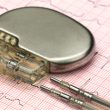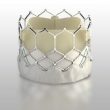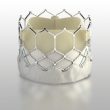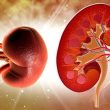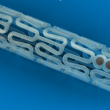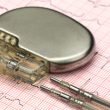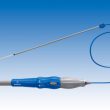TAVR has shown benefits in high risk patients (prohibitive) and in intermediate risk patients, but the need for permanent pacemaker implantation (PPI) continues to be a soft spot (especially in younger patients) given time of use, eventual replacement and associated complications. Even though there is little information on PPI, pacemakers are not associated with higher mortality, but they...
New Self-Expanding Valve Measures Up Against Sapien 3
Both balloon-expandable and self-expanding valves have been tested in randomized studies, with excellent outcomes. While both technologies have advantages, the chance to reposition or re-steer the sheath is only offered by self-expanding valves, which also adjust better to patient anatomy. The CHOICE trial, published in 2014 in JAMA, was one of the few randomized studies...
The SOURCE 3 Confirms the Good Outcomes of the SAPIEN 3 at One Year Followup
Transcatheter aortic valve replacement (TAVR) was developed as a strategy to treat non-surgical aortic stenosis, and was later expanded to elderly patients at intermediate risk, because of increased operator experience (overcoming the learning curve) and improved devices. The present study presents the one year outcomes of the SOURCE 3 trial, the multicenter European registry of the...
An Important Study Shows That Renal Function Must Be Cared for in TAVR
Courtesy of Dr. Carlos Fava. The presence of renal dysfunction in the “real world” is over 25% in patients who undergo transcatheter aortic valve implantation (TAVI). The evolution of this disease among patients who are subjected to a replacement is well known, but evidence for patients who undergo TAVI is still limited, particularly for those who...
Bioresorbable Scaffolds Must Not Be Chosen Over Current DES
Although there are 4 approved bioresorbable scaffolds (BRS) in Europe, experts suggest that current drug-eluting stents (DES) are the best option for coronary angioplasty. These new guidelines jointly published by the European Society of Cardiology (ESC) and the Association of Percutaneous Cardiovascular Interventions (EAPCI) are an update on the use of BRS in clinical practice...
Tricuspid and Bicuspid Valves Present More Coincidences Than Expected
There is more and more positive evidence that new-generation transcatheter valves, originally designed to treat tricuspid aortic valves, work perfectly fine on bicuspid aortic valves. A comparison of computerized tomography (CT) scans obtained before and after the procedure showed that the most commonly used devices appear to reshape the aortic annulus to the same degree...
End of Discussion on the Impact of Pacemaker After TAVR?
Transcatheter aortic valve replacement (TAVR) is often associated with conduction abnormalities, which usually end with permanent pacemaker (PPM) implantation in 10-40% of patients. Factors predisposing to PPM after TAVR have been studied in great detail, but their short- and long-term clinical impact is still controversial. Recently, outcomes from a large cohort of patients were...
Positive Outcomes of CoreValve Evolut in Large Population
The Evolut R, as well as its predecessor the CoreValve, is a self-expandable valve, supra-annular, made of porcine pericardium in a nitinol frame. Amongst its improvements, it has a better profile and the option to resheath. This makes it fully repositionable and even recapturable. We only needed to confirm these technical advantages would translate into clinical...
A Simple Electrocardiography to Predict Mortality in TAVR
Conduction abnormalities, such as new left bundle branch block, atrioventricular block, and need for a pacemaker, are still among the most frequent complications in transcatheter aortic valve replacement (TAVR). New valve generations have (mostly) not managed to reduce significantly electrical abnormalities; furthermore, some modifications such as external skirts, which are extremely effective for the reduction...
How can we classify aortic stenosis in patients who underwent TAVR?
Courtesy of Dr. Carlos Fava. Aortic stenosis can present different hemodynamic patterns, such as low flow and low gradient with reduced or preserved ventricular function. However, evidence on the evolution of different hemodynamic patterns after transcatheter aortic valve replacement (TAVR) is limited. This study consisted in a retrospective analysis of 368 patients who underwent TAVR. The population was divided in...
